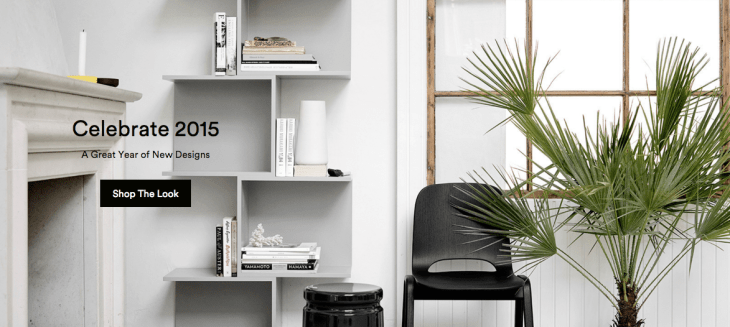It looks like another chapter is in the works for Hem, the home design startup headed by Jason Goldberg that first emerged as a pivot from the Fab.com design marketplace in 2014. We’ve heard from multiple sources that Hem.com has been trying to sell itself and that Vitra, a high-end furniture company based in Switzerland, is currently in the frame to buy it.
From what we understand, Hem.com — a Berlin-based business that designs, makes and sells its own line of stylish furniture and other home products — had received several offers. A term sheet for a sale to Vitra has been signed. However, the deal has not yet been completed, which means something could still change. One source claims the acquisition is being done for only $20 million.
We’ve contacted Vitra for comment but have not received a response. Jason Goldberg declined to comment for this article. One hint of a connection is that Goldberg happened to travel to Basel in November, around the time that a source says negotiations were taking place. Vitra is based in Birsfelden, Switzerland, right next to Basel.
If the $20 million figure is accurate — or even in the same canton — it’s a big drop for the startup.
Goldberg and co-founder Bradford Shellhammer had raised over $300 million in funding at a $1 billion valuation from investors that included Andreessen Horowitz, Atomico, First Round, Menlo Ventures and Sherpa, Tencent, the Washington Post, and several others.
(Much has changed since the last mega round in 2013: Shelhammer left the business in November of that year, and now is the founder of Bezar. The remaining Fab.com assets were acquired by PCH in March 2015. Hem.com, meanwhile, kept Fab’s original funding, investors and valuation.)
It’s not known why Hem.com decided to look for a buyer. Since going live in September 2014, Hem.com has not shared too much information about how the business has progressed, or whether sales of its tables, lamps, shelves, oak pigeons and other objects have met expectations.
But in an optimistic one-year anniversary post, Goldberg noted that it had nearly quadrupled the number of products in its range to 330 SKUs and sold “tens of thousands” of units to consumers and businesses.
Nor is it clear how Hem.com was doing in terms of its own capital position. When it launched, Goldberg said the plan was to build a profitable operation, without resorting to more fundraising.
“When I went to the board and recommended this direction, I did so with a large war chest,” Goldberg said at the time of the launch. “We are building a high margin business. I’m committed to building a profitable business on the money we’ve raised up to now. We have no plans to raise additional funds.”
It may be that a tie-up with a company like Vitra could be one way for Hem to move to better economies of scale. Vitra already focuses on high-end furniture, producing and selling iconic chairs and other pieces created by the likes of Charles and Ray Eames, for example.
Itself the product of a pivot from gay social network Fabulis, Fab.com saw a surge of early interest from consumers, but its fate reads like a cautionary tale for the e-commerce industry.
Even while people were enthusiastically clicking to buy Fab’s quirky mix of kitsch, hip and slick home design and other products, the company found it hard to scale to meet demand in a cost-effective way.
“E-commerce is very much a scale business, where the winner takes all,” Goldberg told TechCrunch in 2014, around the time that he was refocussing efforts on Hem.com. “It’s not that hard to build a $100 million revenue e-commerce business, but how do you scale after initial customer enthusiasm to consistently shipping fast, holding inventory, and so on. When you have scale it is much easier.”
Fab.com missed revenue targets, and at its peak burned through $14 million per month due to high marketing and other expenses. That led to the company reducing staff, closing operations and rethinking the business, not so much as the next Amazon but as a more focused enterprise.
The product of that was Hem.com, a vertically integrated, stylish home furnishings and design business that might yield less sales volume, but higher margins.
“When you are selling third-party products and the margins are very low and customer expectations are very high, it was not a model you could execute successfully, not a model where we liked to operate,” Goldberg told TechCrunch in 2014. “So we decided we wanted to invest in making our own products and being full stack.”
Hem.com was meant to be more pared down than Fab.com, but it still brought together several other acquisitions — MassivKonzept in Berlin, One Nordic in Helsinki, MyFab in France and assets from Italy’s Discipline.
